Yesterday I was in the mood to leave winter behind for somewhere exotic and my journey took to me to Yves Saint Laurent and Pierre Bergé’s Russian folly, a reproduction of a dacha, on the their property at Château Gabriel on the coast of Deauville in Normandy, France. (See Russian Reverie). After pouring over articles written as far back as 1990 on their opulent coastal estate I became somewhat nostalgic to revisit the main house, Château Gabriel, once again. And how apropos that I find myself “In Search of Lost Time”, for it was Saint Laurent’s dream to fashion a fantasy at their château as hommage to Marcel Proust’s seminal work Á la Recherche du Temps Perdu. A dream that is no longer but in memory.
There are two accounts as to when Saint Laurent and Bergé purchased the 19th-century Neo-Gothic-style property. According to an article written for House & Garden in 2005 the couple bought it in 1978. According to an article written for The World of Interiors in 2009 the couple purchased it in 1983. No matter, really. What is fascinating is the story, the fantasy, that Saint Laurent conjured for their grand coastal retreat. He envisioned it as a richly layered celebration of the objective and subjective interior worlds of Proust’s characters and their noble dwellings. Bergé explained, “Decoration must start with a story, and then you embroider around the subject.”
To realize their fantasy they called upon interior designer Jacques Grange, who would go on to decorate most of their homes. As a starting point for the decoration of most of the public rooms Saint Laurent envisioned the painterly effect of Claude Monet’s Nymphéas (Water Lilies) for the walls, the artist whom Proust based the character Elstir upon, executed by decorative painter Paul Meriguet. The inky aquatic greens and blues of the grand salon’s mural served as a foil for an overabundance of opulent Napoleon III furniture and a dash of Louis XV, together with fanciful decorative flourishes, instilling a distinctly Proustian atmosphere. The affect is what Grange referred to as “a blend of a Visconti film and le goût Rothschild“. As if by providence, it wasn’t until after the couple purchased the château that they discovered Marcel Proust first met his publisher, Gaston Gallimard, on the grounds of the estate.
A corner vignette in the main salon features one of two saucy velvet and silk covered Napoleon III chairs which came from Madeleine Castaing, surrounded by Japanese Cloisonné cachepots and Art Nouveau decorative arts.
Another view of the grand salon features the baronial fireplace and decadent appointments.
A quiet, pale yellow version of Monet’s Water Lilies dress the walls of the dining room, which features French 19th-century Neo-Gothic chairs around an English mahogany table. The black-and-cream marble floors extend into a more intimate dining area in the foreground, next photo.
Monet’s Water Lilies continue to inspire the decorative scheme of the library in shades of cream and pale green. On Saint Laurent’s desk is a 16th-century bronze of the Borghese gladiator between two Italian carved-marble urns.
Leaning against a chair back is a daguerreotype by Nadar of Sarah Bernhardt, whose style Saint Laurent admired. Stationary in the designer’s desk includes cards to indicate which rooms guest should occupy. As it turned out, the house hosted few parties.
An English leather chesterfield facing the fireplace divides the library; the chair behind is Gothic Revival. The portieres at the door create a cocooned intimacy.
The winter garden, a recreation of 19th-century style, was inspired by Princess Mathilde and always filled with orchids.
Pierre Bergé’s room was named after Charlus, Proust’s aristocratic and decadent aesthete, and revels in the 19th-century’s love affair with the exotic. Deep colors of mauve and viridian, and Orientalist touches including Bergé’s collection of paintings and a 19th-century bearskin rug complete the look. Furnishings include a padded armchair in brown leather, a French Empire daybed, and a Neo-Gothic French table.
Saint Laurent’s bedroom and study was inspired by Proust’s Charles Swann, the cultivated, sensitive and erudite hero. The walls are covered in a ravishing red fabric with an elephant-and-tiger motif.
The study off Saint Laurent’s bedroom features two parcel-painted Biedermeier chairs in front of a Louis-Philippe mahogany desk and a Neo-Gothic faux-bamboo bookcase beneath an enamel plaque from Limoges.
The main feature of Saint Laurent’s bathroom is a Neoclassical tile frieze depicting preparations for a marriage ceremony.
As an aside, here is a quote from Jacques Grange on the design of Château Gabriel and the evolution of his on-going business and personal relationship with Saint Laurent and Bergé, as recorded at the time of the Christie’s sale in 2009:
“When Pierre Bergé and Yves Saint Laurent acquired Château Gabriel, at Bénerville, an uninhabited, late nineteenth century neogothic mansion, with a commanding view over the bay of Deauville, they asked me to decorate it. This residence was simply waiting to be given a new life and the commission was most certainly a key moment in my career as a decorator. The very close relationship between us three gave to this project an exceptional dimension. All of Yves Saint Laurent’s decorative themes were quite meticulous; however I was encouraged to interpret them as I saw fit, in order to produce the best results. The main sources of my inspiration were the film sets of Luchino Visconti, more precisely that of “L’Innocente”, as well as the ambiance and atmosphere that were present in the numerous castles created by Ludwig II of Bavaria. The imposing ‘portières’ and curtains made from thick, opulent fabrics, formed a perfect contrast with the Napoleon III furniture and other unusual and fantastic objets d’art. This was indeed, quite similar to the way in which the Viscount and Viscountess de Noailles, the Rothschilds and Princess Mathilde, all decorated their properties, punctuated with an abundant use of plants and flowers, which rendered their homes both unique and enchanting. The living rooms all had a certain cinematographic and artistic quality to them, along with a mural representing Monet’s Nymphéas, with the decoration in the bedrooms inspired by characters taken from Marcel Proust’s A La Recherche du Temps Perdu. Two years later and after much effort to find extraordinary objects, driven by Pierre Bergé the house was finally ready. The park, which was designed by Franz Baecheler include both rose and Japanese gardens, a lake and a potager. Since then was added a checkerboard of topiary pushing up between sculptures of François-Xavier Lalanne. As I said to a journalist from the New York Times in 2005: “Of all the houses I have decorated, those I have decorated for Yves Saint Laurent are the most important part of my work”. Afterwards mentioning Château Gabriel I added: “I love this place. It is unbelievable, extraordinary. I would like to dismantle it all and spirit it away.” I do hope that each and every one of these pieces, which were chosen with such a fervent passion, will give to each collector, the same pleasure that they gave to us.” ~ Jacques Grange
This post is based on articles featured in House & Garden, December 2005, with photography by François Halard, and The World of Interiors, December 2009, with photography by Ivan Terestchenko.











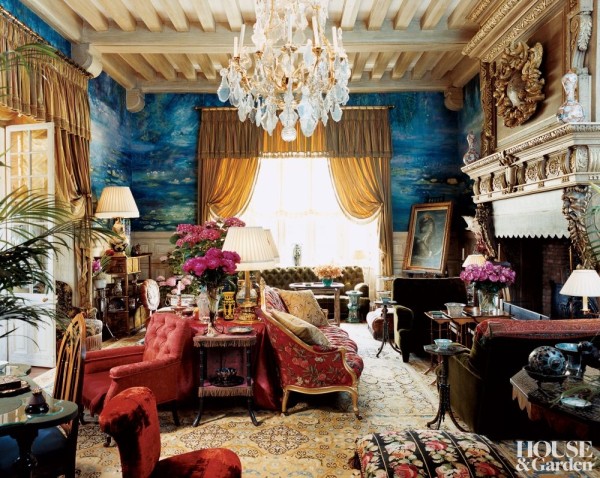
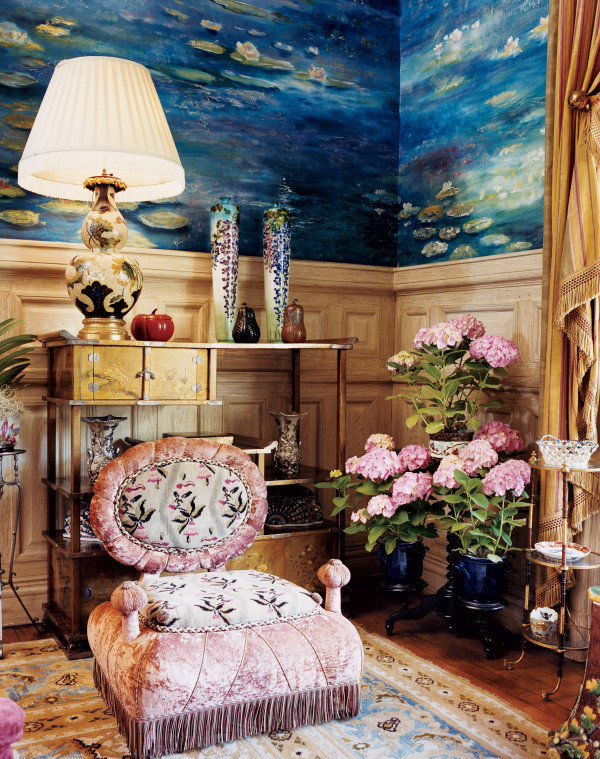
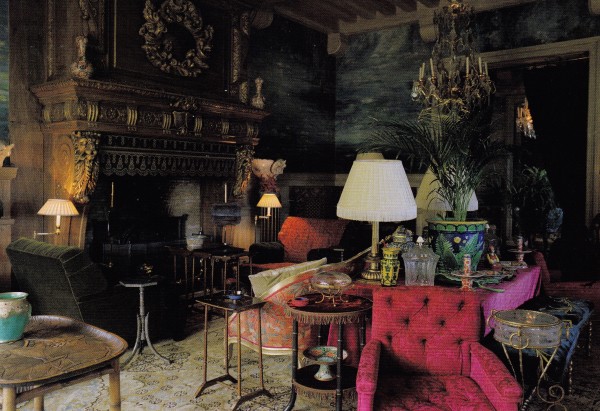
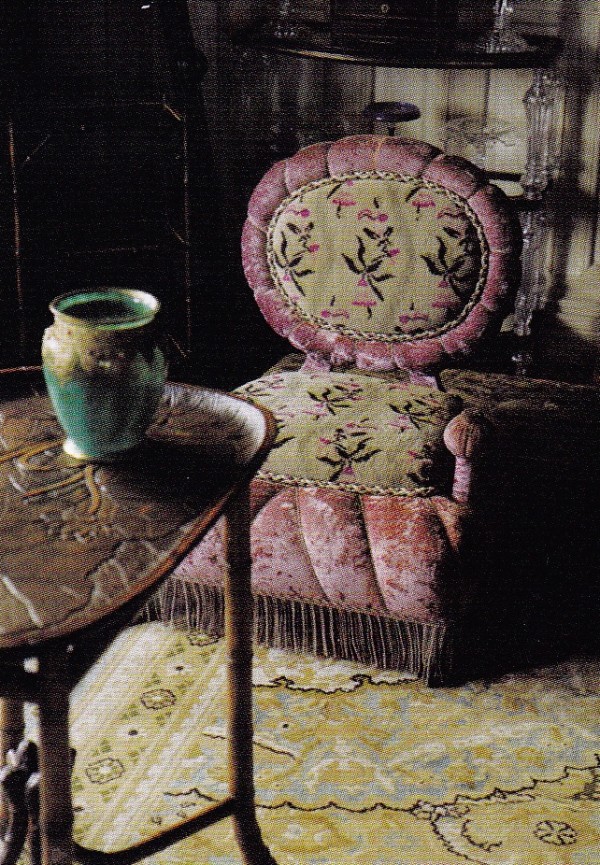
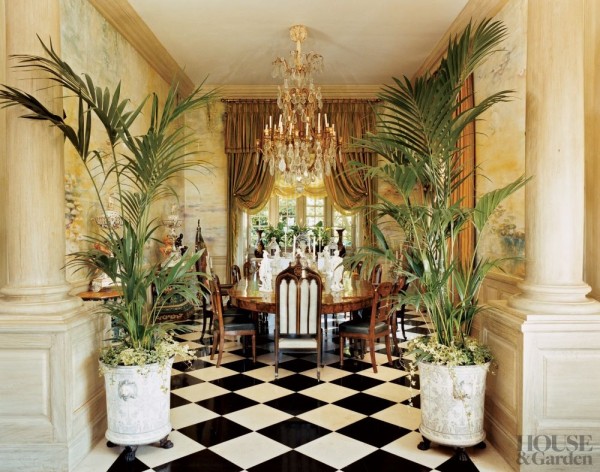
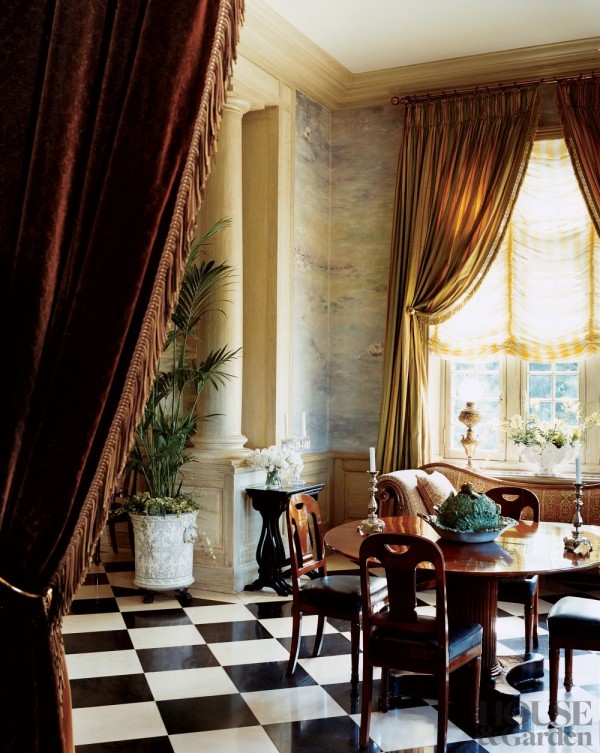
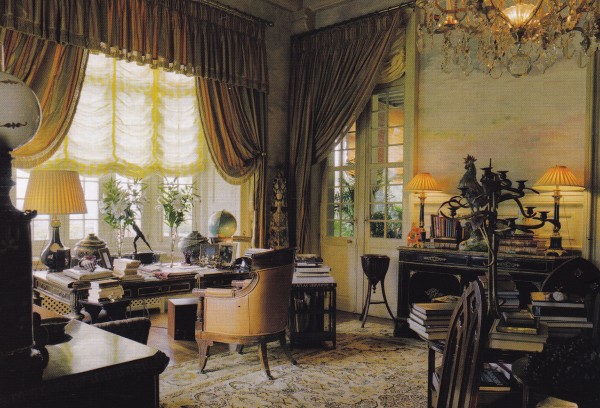
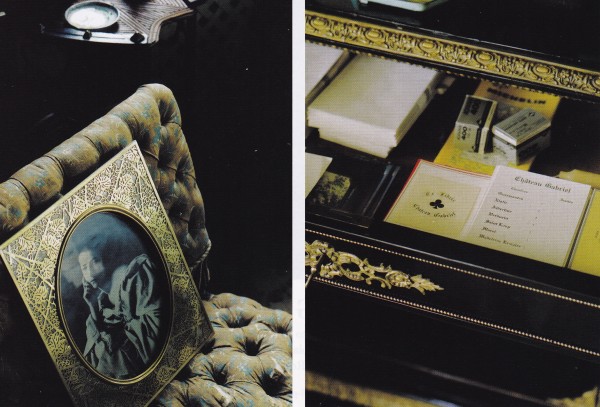
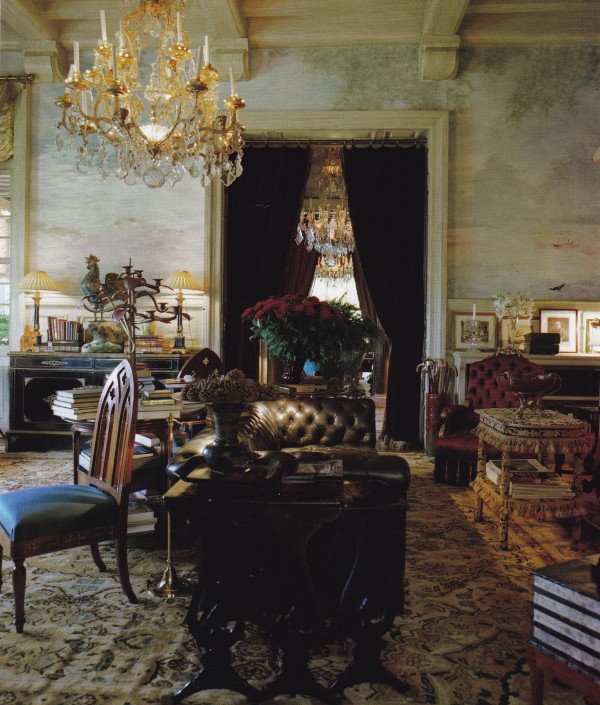
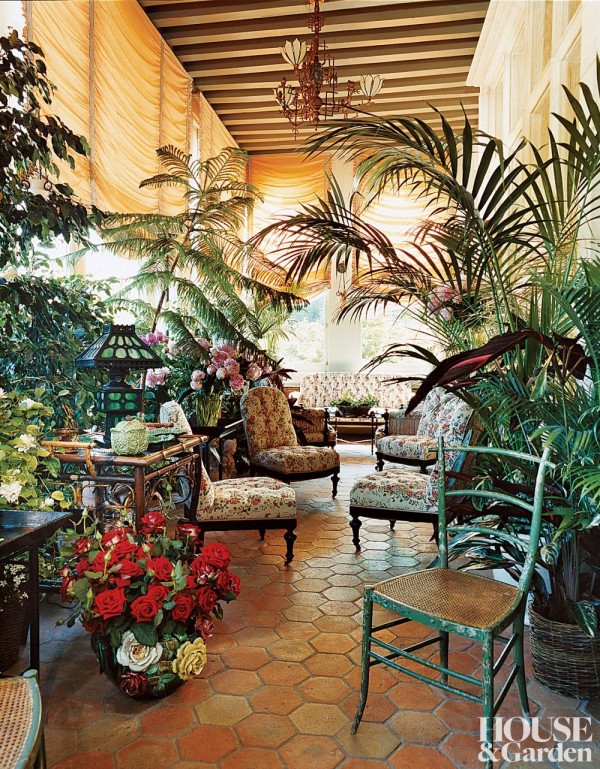
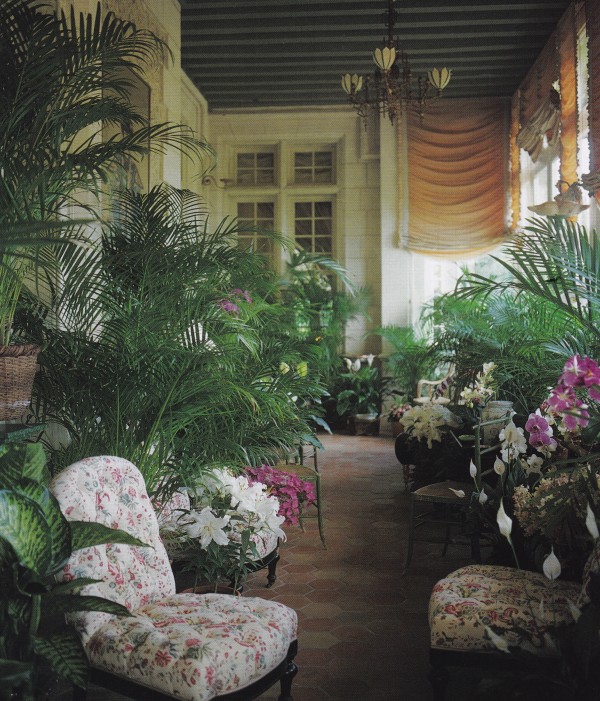
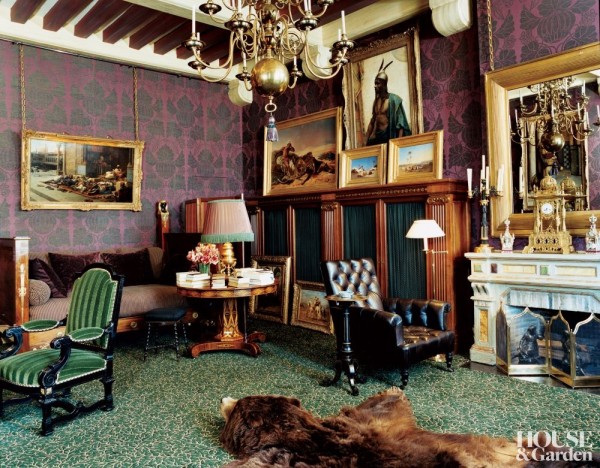
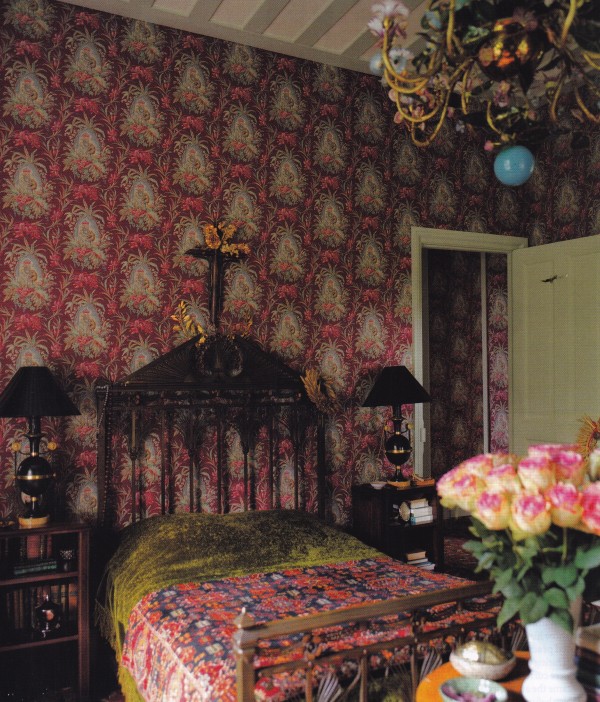
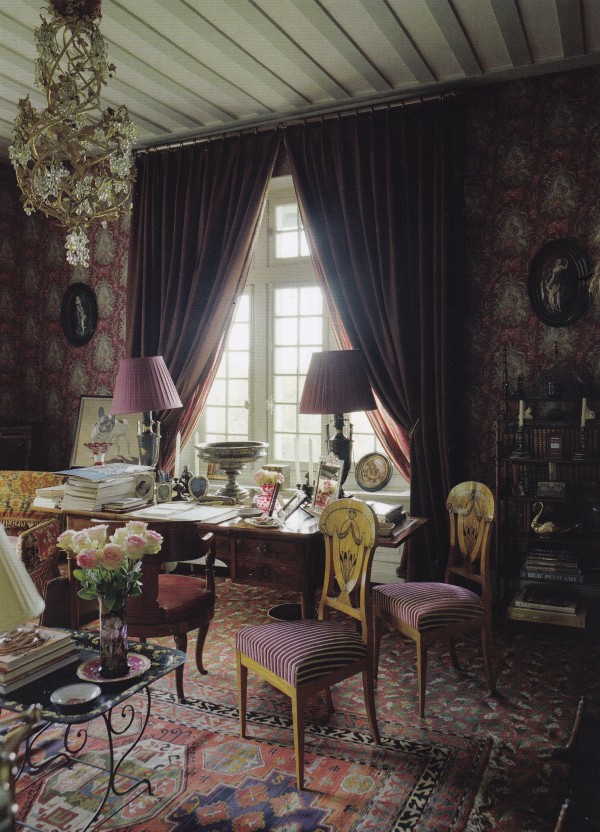
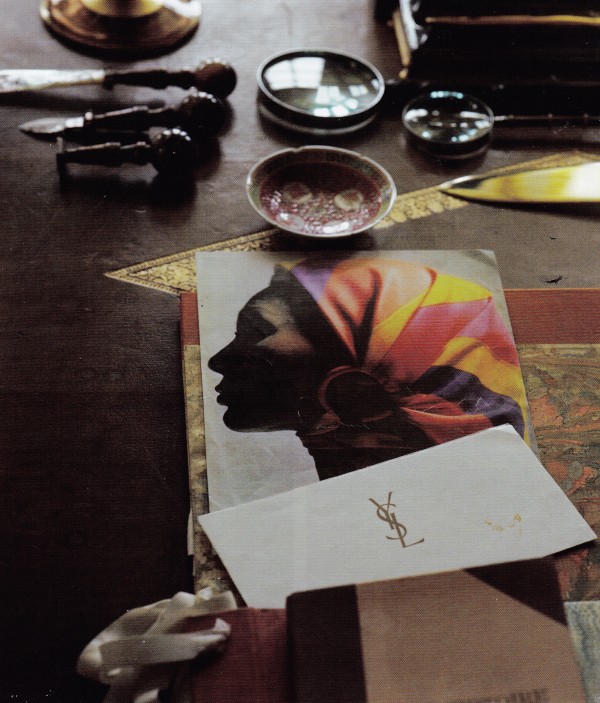
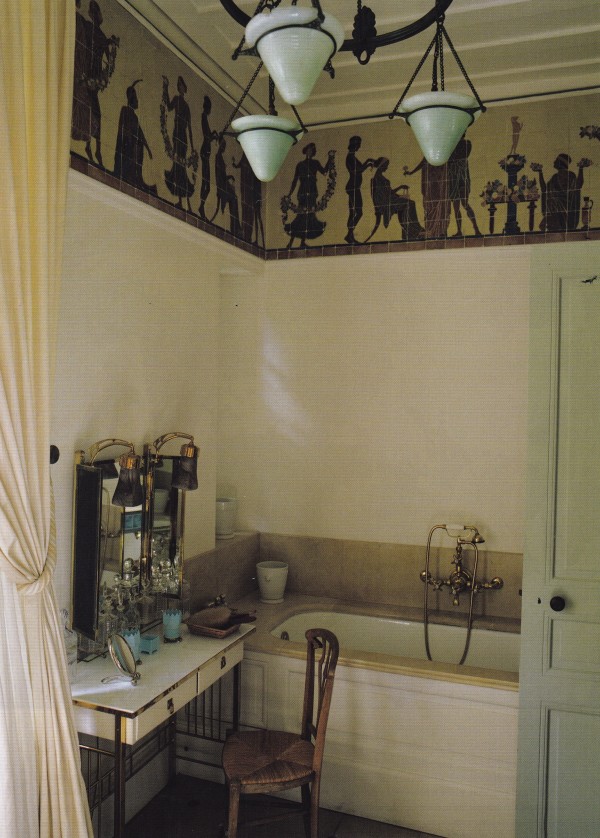



Cosy, but a little daunting.